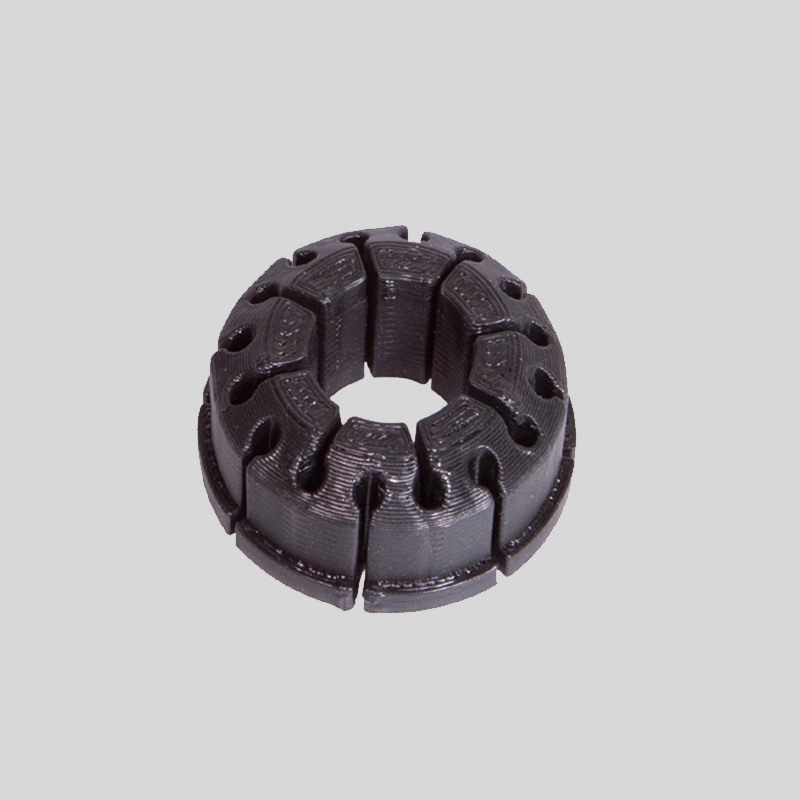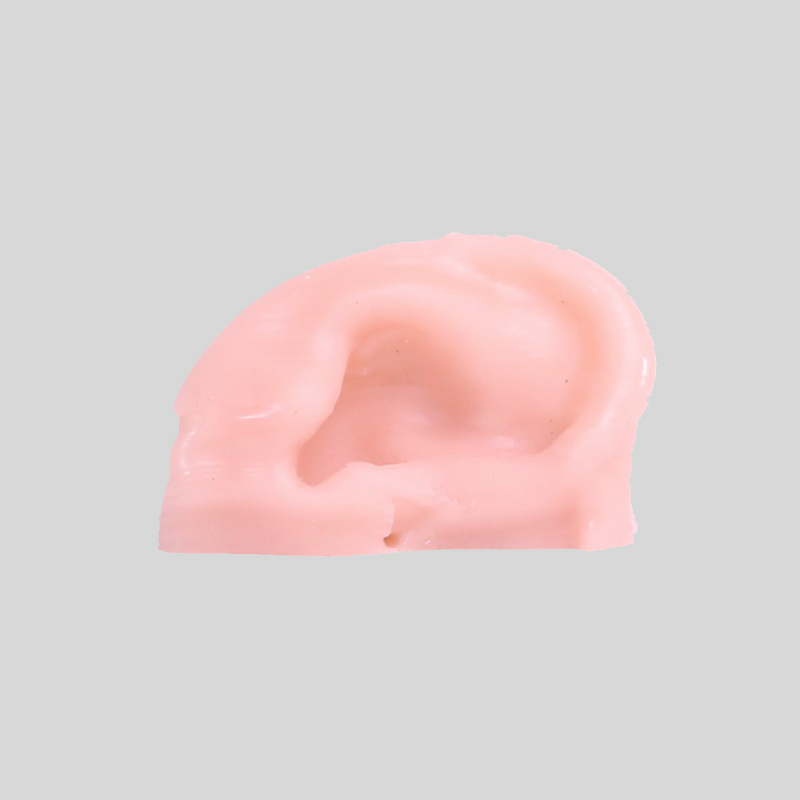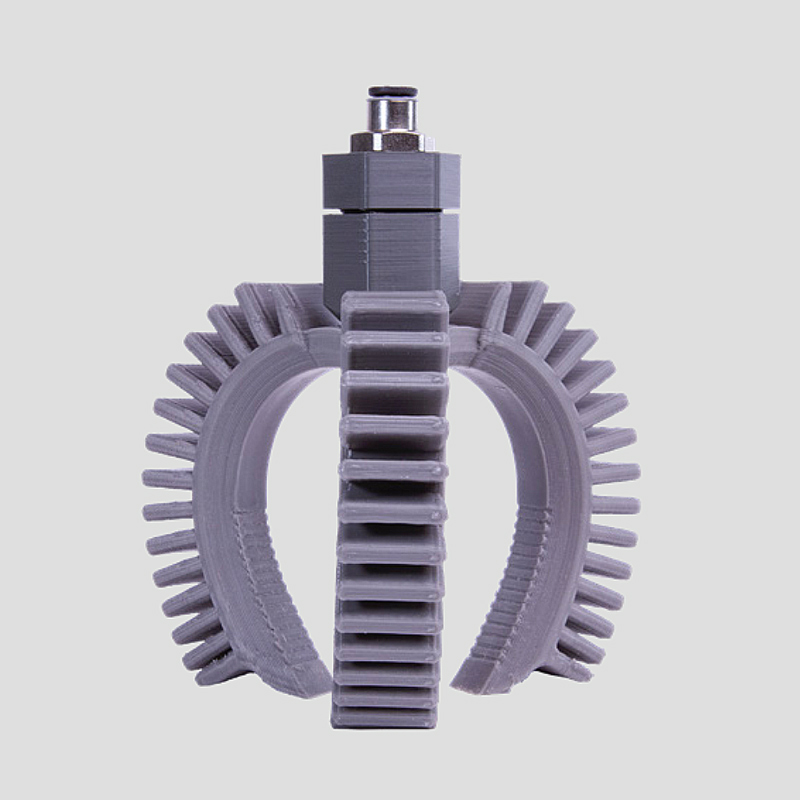Silicone 3D Printing: The Game-Changer You Didn’t See Coming
If you’ve been keeping an eye on the ever-expanding world of 3D printing, you’ve probably heard a lot about plastics, metals, and even ceramics. But here’s the material that’s quietly shaking things up: silicone. Unlike traditional rigid materials, silicone offers flexibility, heat resistance, and durability—making it a prime candidate for industries that need parts to bend, stretch, and withstand extreme conditions without breaking a sweat.
Why Silicone 3D Printing is a Big Deal
Silicone has long been a go-to material for seals, gaskets, medical implants, and wearable tech. But until recently, manufacturing with silicone meant using molds—expensive, time-consuming, and not exactly friendly to rapid prototyping. Enter 3D silicone printing, which eliminates the need for molds and makes it possible to create complex silicone parts on demand.

The result? Faster production, lower costs, and greater design freedom. Whether you’re developing a custom prosthetic, an industrial seal, or a soft robotic gripper, 3D silicone printing lets you iterate designs quickly and manufacture small batches without the financial headache of traditional tooling.
The Advantages: Why Go Silicone?
There are a few reasons why you might consider 3D printed silicone for your next project:
Flexibility & Durability
Silicone bends, stretches, and compresses without losing shape. It’s like the superhero of elastomers—ideal for medical devices, consumer products, and robotics where rigid materials just won’t cut it.
Extreme Heat & Chemical Resistance
Think of silicone as the rugged adventurer of the material world. It thrives in temperatures from -50°C to 250°C and stands up to exposure from oils, solvents, and chemicals. That’s why it’s widely used in automotive and industrial applications where reliability under stress is a must.
Biocompatibility & Safety
If it’s going near human skin—or inside the body—you need a material that’s safe.

Medical-grade silicone meets stringent biocompatibility standards, making it a top choice for prosthetics, implants, and wearable health devices.
Where Silicone 3D Printing is Making an Impact
Curious about a few applications that are well-suited for silicone 3D printing? Here you go:
Medical & Wearable Devices
From prosthetics and surgical tools to custom-fitted health wearables, silicone 3D printing is revolutionizing the medical field. Because silicone is both soft and biocompatible, it’s perfect for applications that require direct contact with the human body. Imagine patient-specific medical components designed for comfort, function, and long-term use—all produced without expensive molding.
Seals, Gaskets & Industrial Components
Silicone is the go-to material for creating gaskets, seals, and vibration dampeners that can endure heat, pressure, and chemical exposure. In industrial and automotive applications, these parts need to be tough—and 3D printing allows manufacturers to produce them in custom shapes without waiting weeks for tooling.
Electronics Protection
Electronics don’t do well with moisture, dust, or extreme temperatures. That’s where silicone-printed casings and encapsulation solutions come in. Not only do they shield delicate components from environmental hazards, but they also help with thermal management, dissipating heat to extend the lifespan of devices.
Soft Robotics & Automation
This is where things get really interesting. Soft robotic grippers, actuators, and sensors rely on flexible materials to function, and silicone’s elasticity makes it an ideal candidate.

development is a helpful advantage
Whether it’s a robotic hand that can gently handle fragile objects or a flexible sensor embedded in a wearable device, 3D-printed silicone is unlocking new possibilities in automation and robotics.
The Technical Side: Materials & Specs
Silicone 3D printing isn’t a one-size-fits-all deal. There are different material formulations depending on the application:
- Medical-Grade RTV2 Silicone (Shore A 5, 10, 25, 40) – Certified biocompatible for healthcare applications.
- Industrial-Grade RTV2 Silicone (Shore A 50) – Used for more rigid industrial parts that still require some flexibility.
- Polyurethane Alternatives (Shore A 50-80) – Sometimes used for applications where a different balance of flexibility and toughness is needed.
Understanding Material Properties and Testing
To fully grasp the capabilities of silicone used in 3D printing, it’s essential to consider its specific properties and the methods used to test them. Here’s a breakdown:
- Shore-A Hardness: Measured using ISO 7619-1, this property ranges from 35 to 60 for various applications, indicating the material’s resistance to indentation.
- Density: According to ISO 1183-1 A, densities vary slightly, with typical values around 1.08 to 1.13 g/cm³, ensuring the material is lightweight yet durable.
- Tensile Strength: Assessed using ISO 37 Type 4, silicone’s tensile strength ranges from 8 to 10 MPa, showcasing its ability to withstand stretching forces.
- Elongation at Break: Also tested via ISO 37 Type 4, this property ranges from 320% to 950%, highlighting the material’s flexibility before breaking.
- Tear Strength: Measured with ASTM D624 Type C, tear strength varies between 9 to 14 N/mm, reflecting the material’s resistance to tearing.
These properties are tested under standardized conditions to ensure consistency and reliability in performance, making silicone a versatile choice for a variety of 3D printing applications.
Softness and Hardness in Silicone
When comparing silicone to common elastomers, it’s crucial to consider both softness and hardness. Silicone stands out in its versatility:
- Soft (30-35A) Silicone: This softer variant excels in applications where flexibility and gentle cushioning are needed, outperforming many common elastomers in creating a snug, adaptable fit. Think of medical implants or soft-touch consumer products.
- Harder (60-70A) Silicone: For those applications demanding durability and resilience, harder silicone is the go-to. It maintains its shape under pressure, making it a favorite for industrial uses and robotic components.
In both forms, silicone’s unique ability to maintain its properties across a wide temperature range makes it preferable over traditional elastomers. Whether in a soft or hard state, silicone’s adaptability and performance ensure it meets the demands of modern engineering marvels.
Technical Specifications
Build volumes typically max out around 300x250x200 mm, with layer heights ranging from 240µm to 350µm—offering a balance between precision and efficiency. With dual extrusion heads and heated chambers, modern silicone 3D printers ensure consistent curing and high-quality output.
By combining the versatility of silicone formulations with rigorous testing standards, 3D printing with silicone offers tailored solutions for both medical and industrial applications, ensuring optimal performance across diverse projects.
Tolerances for Well-Designed 3D-Printed Silicone Parts
When designing 3D-printed silicone parts, precision is key. The tolerances, which define the permissible limits of variation in a physical dimension, play an essential role in ensuring quality and functionality.
Tolerances in Different Units:
- For Measurements in Inches: The standard tolerances for parts in the X, Y, and Z directions start at +/- 0.004 inches for the first inch. Beyond that, an additional tolerance of 0.1% of the nominal length is added as the dimensions increase.
- For Metric Measurements: In metric terms, the tolerances mirror their imperial counterparts, beginning with +/- 0.1 millimeters for the initial inch. Similar to the imperial system, a tolerance of 0.1% of the nominal length is also included beyond the first inch.
By adhering to these guidelines, manufacturers can ensure that their 3D-printed silicone components meet the design specifications while maintaining structural integrity. These tolerances are especially critical in applications requiring high precision and reliability.
What’s Next for Silicone 3D Printing?
Expect the technology to keep evolving. We’re already seeing advancements in material formulations that enhance mechanical properties and improve printability. The future holds even more exciting applications—think bio-printed silicone organs, fully customized consumer wearables and protection products, and finely-tuned grippers for soft robotics. The ability to rapidly prototype and manufacture functional silicone parts without molds is a large part of the excitement, too, reshaping product development across multiple industries.
In short, if you’re in a field where flexibility, heat resistance, and biocompatibility matter, it might be time to start paying attention to silicone 3D printing. This isn’t just a niche innovation—it’s a manufacturing revolution in the making.
Questions about 3D printing with silicone? Reach out today – let’s discuss.
